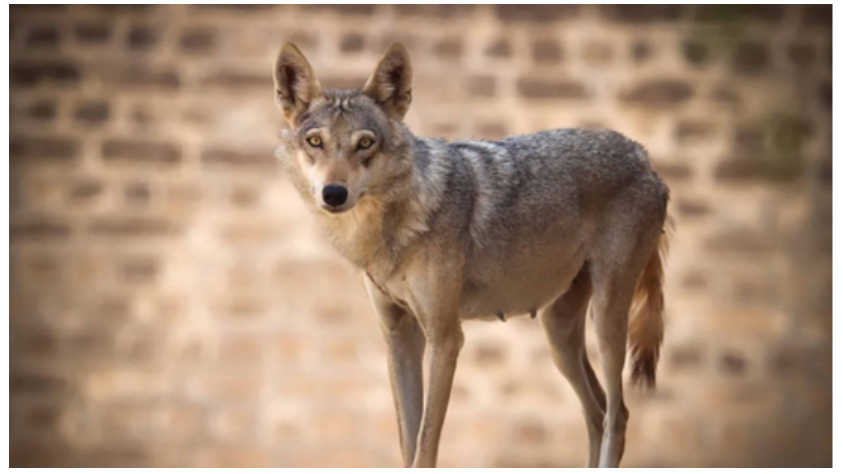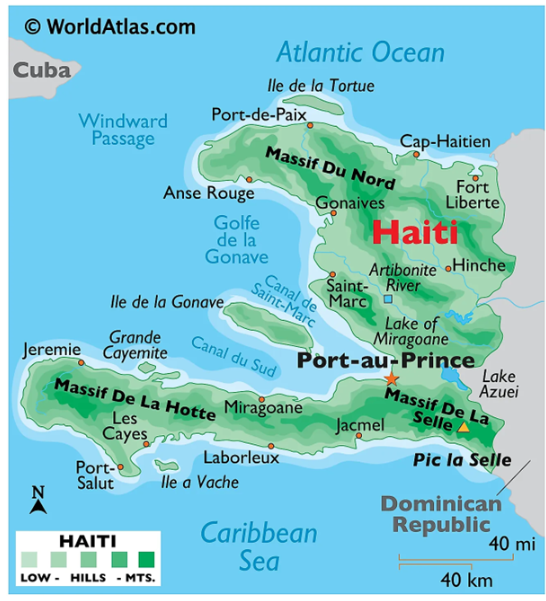Thursday, 19th October 2023
Methane Mitigation to Combat Global Warming
In News: Recently, the International Energy Agency, the United Nations Environment Programme (UNEP), and the UNEP-convened Climate and Clean Air Coalition have jointly released a report titled "The Imperative of Cutting Methane from Fossil Fuels" highlighting the significance of targeted methane mitigation to combat global warming.
Key Highlights of the Report:
- Methane Emissions and Global Warming: To keep global warming to 1.5°C over pre-industrial levels, methane emissions must be reduced. Methane is a very strong greenhouse gas that has been contributing to global warming since the Industrial Revolution at a rate of roughly 30%. By 2050, these initiatives could be able to stop global warming by about 0.1°C.
- Present Methane Emission Scenario: Methane emissions total about 580 million tonnes annually throughout the world. 60% of these emissions are a result of human activity. About 120 million tonnes of methane emissions in 2022 came from fossil fuel activities alone. Total anthropogenic methane emissions might increase by up to 13% between 2020 and 2030 if current trends continue.
- Target Methane Mitigation: Even with significant reductions in fossil fuel consumption, failure to manage methane might cause global temperatures to rise over 1.6°C by 2050. Measures to specifically reduce methane are essential and should support decarbonization efforts. By 2030, nearly 80 million tonnes of methane emissions from fossil fuels can be avoided according to current technology.
- In the Net Zero scenario, all methane reduction initiatives in the oil and gas sector will cost around USD 75 billion by 2030. The majority of initiatives can and should be funded by the industry, but some interventions may be impossible to undertake in low- and middle-income nations without special financing because of access issues.
- Economic and Health Benefit: Ground-level ozone pollution is mostly caused by methane, and mitigation measures will reduce the number of premature deaths by "nearly one million through 2050, which is equivalent to the current population of Amsterdam, Netherlands." 95 million tonnes of agricultural losses for wheat, rice, soy, and maize (corn) will be avoided if methane reduction goals are accomplished.
- By 2020 to 2050, preventing such losses of crops, labor, and forests will "provide direct economic benefits valued at more than USD 260 billion."
United Nations Environment Programme (UNEP):
- The UNEP is a leading global environmental authority established on 5th June 1972.
- Headquarters: Nairobi, Kenya.
- Major Reports: Emission Gap Report, Adaptation Gap Report, Global Environment Outlook, Frontiers, Invest into Healthy Planet.
- It establishes the global environmental agenda, advances sustainable development within the framework of the United Nations, and acts as a strong voice for the defence of the environment worldwide.
- India is a member of the UNEP.
UNEP-Convened Climate and Clean Air Coalition (CCAC):
- Governments, international organisations, corporations, academic institutions, and civil society organisations are participating in a voluntary worldwide collaboration to eliminate short-lived climate pollutants (SLCPs), which have a substantial impact on public health and climate change.
- Since 2019, India has become a CCAC Partner.
International Energy Agency:
- It is an independent intergovernmental organisation that was founded in Paris, France, in 1974.
- It primarily focuses on its energy policy, which include environmental preservation, economic growth, and energy security.
- Major Reports: World Energy Outlook Report, World, Energy Investment Report, and India Energy Outlook Report.
- India joined the IEA in 2017.
Methane:
- The simplest hydrocarbon, methane (CH4), is made up of just one carbon atom and four hydrogen atoms. It is combustible and used as fuel all around the world.
- Methane is a powerful greenhouse gas (GHG) with an atmospheric lifespan of around ten years and long-term effects on climate.
|
UPSC CSE Previous Years Questions Prelims Q1. Which of the following statements is/are correct about the deposits of ‘methane hydrate’? (2019)
Select the correct answer using the code given below.
Answer: (d) Mains Q. “Access to affordable, reliable, sustainable and modern energy is the sine qua non to achieve Sustainable Development Goals (SDGs)”. Comment on the progress made in India in this regard. (2018) |
Bio-Decomposer to Address Stubble Burning
In News: Recently, the Delhi Government has initiated the spraying of a Bio-Decomposer to tackle Stubble Burning.
Stubble Burning:
- The process of burning straw stubble that remains after the harvest of grains such as rice, wheat, etc. is known as stubble burning. It is typically necessary in regions where agricultural residue is left behind after combination harvesting.
- Throughout North West India, it is a custom throughout October and November, although it is most prevalent in Punjab, Haryana, and Uttar Pradesh.
- The paddy crop residues are removed from the field to sow wheat from the last week of September to November, coinciding with the withdrawal of Southwest Monsoon.
Impacts of Stubble Burning:
- It emits a significant quantity of carcinogenic polycyclic aromatic hydrocarbons, volatile organic chemicals, methane (CH4), carbon monoxide (CO), and other hazardous gases into the environment.
- The nutrients in the soil are destroyed when husk is burned on the ground, making the soil less fertile.
- The soil loses moisture and beneficial bacteria as a result of the heat produced by burning stubble.
Alternatives to Stubble Burning:
- In-Situ Treatment: Crop residue management by zero-tiller machine and Use of bio-decomposers.
- Ex-Situ Treatment: Use of rice straw as cattle fodder.
- Application of Technology: Stubble can be uprooted and seeds can be sown in the cleaned area using the Turbo Happy Seeder (THS) equipment. The field can then be mulched using the leftover stubble.
Use of Bio – Decomposer:
- In the application of Bio – Decomposer, a variety of microorganisms, including fungus, bacteria, and enzymes, work together to decompose plant matter into organic matter, which enriches the soil.
- The goal of a bio decomposer is to accelerate the natural breakdown of agricultural wastes.
- Pusa - Bio decomposer:
- It is a fungi-based liquid solution that can soften hard stubble to the extent that it can be easily mixed with soil in the field to act as compost.
- It is developed by the Indian Council of Agricultural Research (ICAR).
- The fungi thrive at 30oC-32oC.
- Benefits:
- The decomposer increases the soil's fertility and production since the stubble serves as compost and manure for the crops, requiring less fertiliser in the future.
- It is a realistic method to eliminate stubble burning that is also effective, affordable, practicable, and practical.
- It is a green technology that benefits the environment and will help realise the Swachh Bharat Mission.
- Applicability:
- The stubble has to be sprayed after harvest, ploughed into the ground, and moderately watered for a period of 20 to 25 days for it to break down.
- Crop rotation, labour availability, and the type of crop farmed all have an impact on the decomposer's applicability to farmers.
- The application of the microbial solution is favoured in September and October because of the lower rainfall during those months.
Way Forward:
- Encourage farmers to use alternative agricultural methods including direct sowing, zero tillage, and crop diversification. These techniques may reduce the production of agricultural residue and the requirement for burning stubble.
- Encourage the use of cutting equipment that can cut crops at a lower height, leaving less stubble behind, such as combine harvesters. Due of this, less stubble will need to be burned.
- Run awareness initiatives to inform farmers of the risks of stubble burning and the alternatives available. To successfully communicate knowledge, engage with farmer organisations, agricultural universities, and local communities.
|
UPSC CSE Previous Years Questions Mains Q. Mumbai, Delhi and Kolkata are the three mega cities of the country but the air pollution is much more serious problem in Delhi as compared to the other two. Why is this so? (2015) |
Arabian Leopards - Edukemy Current Affairs
In News: Arabian leopard is critically endangered, with the leopard having lost 98% of its historical range in its northern range, including the Negev and Judaean deserts.
About
- Arabian leopard is a critically endangered species native to the Arabian Peninsula. These leopards were historically found in various parts of the Arabian Peninsula, including the Negev and Judaean deserts.
- recent study published in 2023 reported that the Arabian leopard has lost most of its historical range, and its populations have become highly isolated and fragmented.
- In the Negev and Judaean deserts, this species is considered extinct in its entire northern range.

|
UPSC Previous Year Questions Prelims (2019) Q 1. Consider the following statements:
Which of the statements given above is/are correct? (a) 1 only Answer: (a) |
Arabian Wolves - Edukemy Current Affairs
In News: Arabian Wolves are critically endangered, in its northern range, including the Negev and Judaean deserts.
About
- The Arabian wolf is a subspecies of the gray wolf. The Arabian wolf holds the distinction of being the world's smallest wolf, making it a unique and significant part of the region's wildlife.
- These wolves are native to the Arabian Peninsula, including regions such as the Negev Desert in southern Israel and parts of the Middle East.
- Arabian wolf remains a resilient apex predator, playing a vital ecological role in the Negev Desert and Arava Valley of southern Israel.
- Arabian wolves are known to "suppress" populations of smaller canids like jackals and foxes.
- These wolves are a crucial part of the desert ecosystem and contribute to maintaining herbivore populations and consuming carrion, which underscores their ecological importance.

|
UPSC Previous Year Questions Prelims (2012) Q. Which one of the following groups of animals belongs to the category of endangered species? (a) Great Indian Bustard, Musk Deer, Red Panda and Asiatic Wild Ass Answer: (a) |
Haiti - Edukemy Current Affairs
In News: Recently, the United Nations approved a Kenya-led security mission to troubled Haiti.
About
- Haiti is located between the Caribbean Sea and the North Atlantic Ocean, Haiti occupies the western one-third of the island of Hispaniola. The Dominican Republic borders Haiti on the eastern side of the island. Haiti’s neighbors include Jamaica to the west and Cuba to the northwest.
- Gold and copper are found in small quantities in the north of the country.
- Official Languages: French, Haitian Creole.
- Major Mountain Ranges: Massif de la Selle, Massif du Nord.
- It is the world’s first independent Black-led republic.
- The nation underwent about two centuries of Spanish colonial rule and more than a century of French rule.

Estivation/ Aestivation - Edukemy Current Affairs
In News: Estivation: The summer’s urge to nap
About
- Estivation is a biological occurrence wherein certain animals enter an extended state of dormancy or inactivity as a response to hot and arid environmental conditions.
- This serves as an essential survival tactic aimed at preserving both energy and water resources.
- Animals undergoing estivation typically find refuge in underground burrows, crevices, or protective cocoons, which allows them to minimize their metabolic processes and energy expenditure.
- This behavioral adaptation is crucial for preventing desiccation and reducing the vulnerability to predation. Some examples of animals that employ estivation as a strategy include the West African lungfish, desert tortoises, and specific land snail species.
Bathukamma Festival in Adilabad
In News: Recently, Bathukamma festival began on a colorful note in Adilabad.
About
- Bathukamma is a colorful floral festival of Telangana and is celebrated by womenfolk with exotic flowers of the region.
- The festival has over the years become a symbol of Telangana culture and identity. Bathukamma comes during the latter half of the monsoon, before the onset of winter.
- The most abundant of these flowers are ‘gunuka’ (or ‘gunugu’) and ‘tangedu’. There are other flowers like the ‘banti’, ‘chamanti’, ‘nandi-vardhanam’ etc.
- The ‘shilpakka pandlu’ (or ‘sitaphalalu’), custard apples, are another great attraction during this season.

https://telanganatoday.com/bathukamma-festival-begins-on-a-colorful-note-in-adilabad
Increase in Glacial lake outburst flood (GLOF) in India
Exam View: The Sikkim story; Glacial lake outburst flood (GLOF); Glacial Lake atlas; Way forward.
Context: India has witnessed at least three highly devastating GLOF events in the Ganga and Brahmaputra basins over the last decade that include the ones at Kedarnath in 2013, Chamoli in 2021 and Sikkim in 2023.
Decoding the editorial: The Sikkim story
- The southern bank of the South Lhonak Lake in Sikkim burst open, leading to an outflow of huge amounts of water.
- Since the lake region is too remote and has scarcely any monitoring network, the exact cause of this glacial lake outburst flood (GLOF) is not known yet.
- Damages:
- The floods caused heavy damage to the Chungthang Dam and hydropower projects of NHPC.
- More than 35 people were killed.
- 14 bridges were washed away or submerged.
- 1,320 houses were severely damaged.
- Drinking water supply lines and sewage networks were damaged.
- Widespread damage to highways was reported in North Sikkim, Gangtok, Pakyong, and Namchi districts. The floods damaged sections of National Highway 10, connecting Sikkim with the rest of India.

Glacial lake outburst flood (GLOF)
- Glacial lakes are formed near the snout of glaciers when meltwater accumulates.
- In recent times, such lakes have been forming with increased frequency because the increased warming of the troposphere has glacier melting.
- The embankments of these lakes consist of loose deposits of glacier moraine, rocks, boulders, soil and ice.
- Since these embankments are not properly compacted, they have a high vulnerability quotient.
- Floods occur when these embankments fail in certain situations:
- The lake water level rises rapidly due to intense rainfall or
- A portion of the glacier is detached from the main body and plunges into the lake, generating high waves. These waves could hit the embankment forcefully.
- Earthquakes destabilise the embankment and water seeping in through the embankment could cause erosion.
Glacial lake atlas
- The ISRO’s National Remote Sensing Centre (NSCRC) released a glacial lake atlas of the Himalayan River Basins.
- NRSC used images acquired by RESOURCESAT-2 satellite during 2016-17 to prepare this atlas, which has identified more than 28,000 glacial lakes of more than 0.25 ha.
- Catchments of the three river basins in north and northeast India have a large number of glacial lakes.
- In a widely quoted scientific paper in Nature Communications, the authors concluded that more than nine million people in High Mountain Asia (HMA), are vulnerable to glacial lake outbursts.
- The Sikkim State Disaster Management Authority has identified more than 300 glacial lakes in the state. Of these, 10 have been identified as vulnerable to outburst floods.
- The Geological Survey of India has found that 13 of the 486 glacial lakes in Uttarakhand are vulnerable to GLOFs.
- A 2021 study led by Delhi University scientist Suraj Mal reported that Jammu and Kashmir has the highest number of vulnerable glacial lakes followed by Arunachal Pradesh and Sikkim.
Different studies use different data and methodologies. Hence, their outcomes are not always comparable.
Way forward
Threats from GLOFs are likely to increase with time due to global warming. Multi-pronged action is required
- Intense monitoring of meteorological events near the snout of vulnerable glacier lakes is an urgent necessity.
- Data should be gathered at observatories and communicated to a centralised office.
- It should be processed in real-time to forecast the behaviour of glacial lakes and alert people.
- Water levels in rivers downstream of vulnerable lakes should also be monitored continuously.
- A nationwide programme to regularly monitor vulnerable glacier lakes by satellites and drones should be initiated.
- Hydrometeorological information and data gathered through monitoring should be combined to issue forecasts and warnings.
- Infrastructure projects in mountains like dams, bridges and highways, must be subjected to stringent quality control measures.
- Scientific studies on glaciers in the country must be scaled up. Lack of funds and skilled personnel today mean that very few glaciers are monitored.
The Himalayan region requires a comprehensive risk assessment that accounts for projected temperature rise, changes in precipitation patterns, and land-use/cover changes. This assessment should inform disaster risk-reduction strategies.
Share the article
Edukemy’s Current Affairs Quiz is published with multiple choice questions for UPSC exams
MCQ
Get Latest Updates on Offers, Event dates, and free Mentorship sessions.

Get in touch with our Expert Academic Counsellors 👋
FAQs
UPSC Daily Current Affairs focuses on learning current events on a daily basis. An aspirant needs to study regular and updated information about current events, news, and relevant topics that are important for UPSC aspirants. It covers national and international affairs, government policies, socio-economic issues, science and technology advancements, and more.
UPSC Daily Current Affairs provides aspirants with a concise and comprehensive overview of the latest happenings and developments across various fields. It helps aspirants stay updated with current affairs and provides them with valuable insights and analysis, which are essential for answering questions in the UPSC examinations. It enhances their knowledge, analytical skills, and ability to connect current affairs with the UPSC syllabus.
UPSC Daily Current Affairs covers a wide range of topics, including politics, economics, science and technology, environment, social issues, governance, international relations, and more. It offers news summaries, in-depth analyses, editorials, opinion pieces, and relevant study materials. It also provides practice questions and quizzes to help aspirants test their understanding of current affairs.
Edukemy's UPSC Daily Current Affairs can be accessed through:
- UPSC Daily Current Affairs can be accessed through Current Affairs tab at the top of the Main Page of Edukemy.
- Edukemy Mobile app: The Daily Current Affairs can also be access through Edukemy Mobile App.
- Social media: Follow Edukemy’s official social media accounts or pages that provide UPSC Daily Current Affairs updates, including Facebook, Twitter, or Telegram channels.





